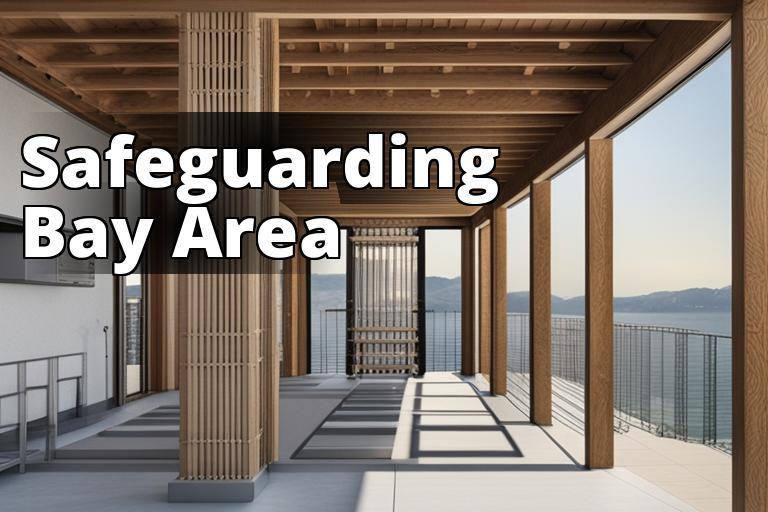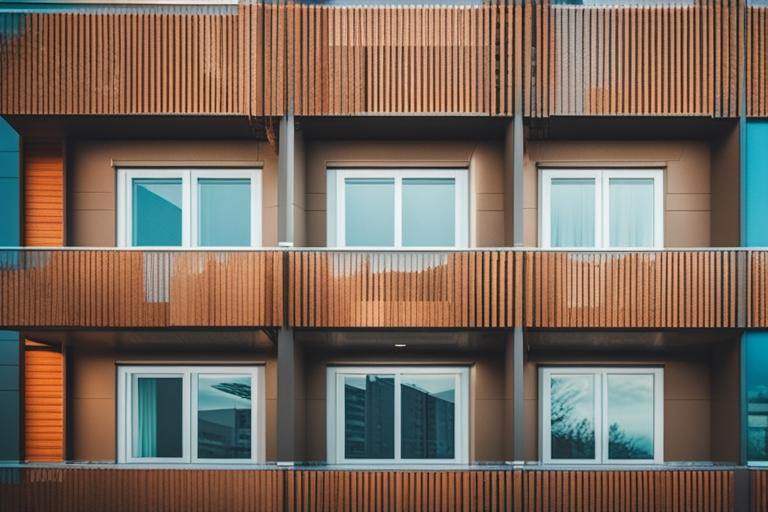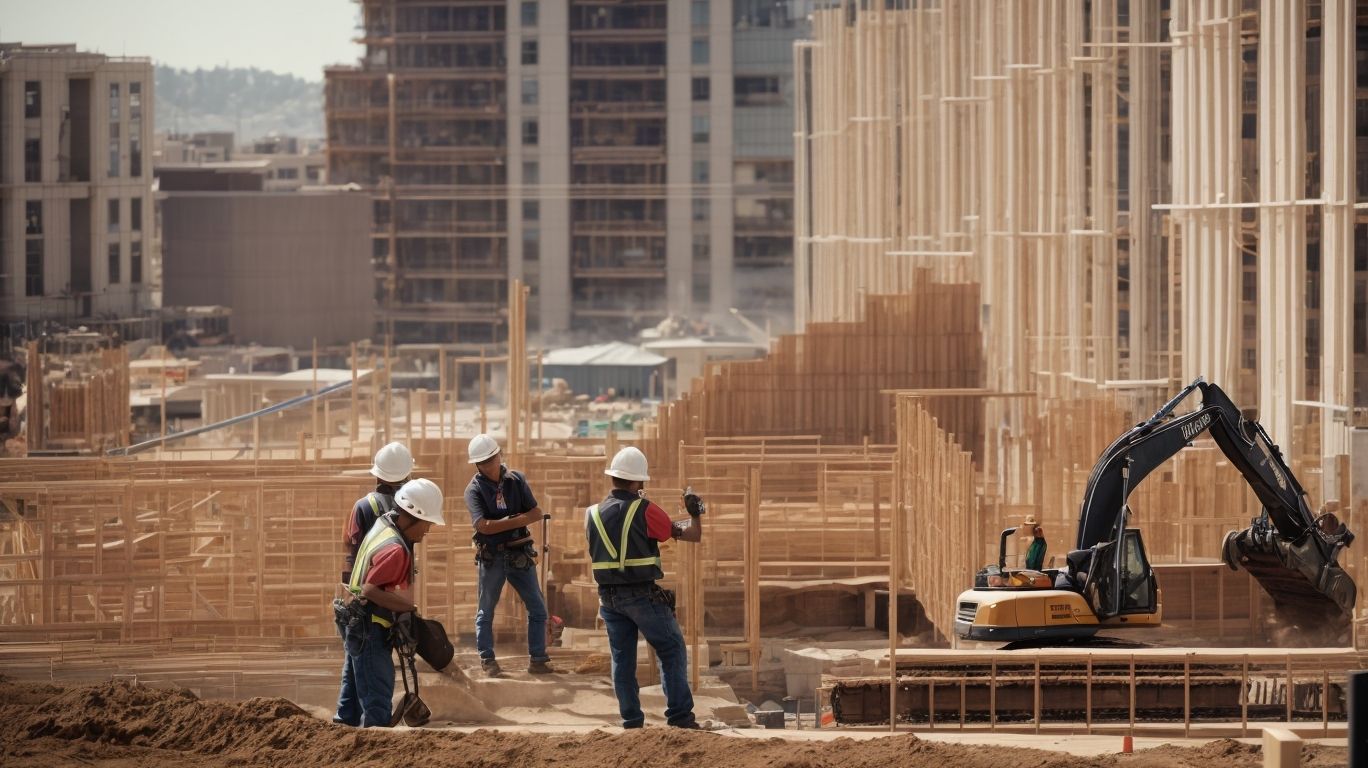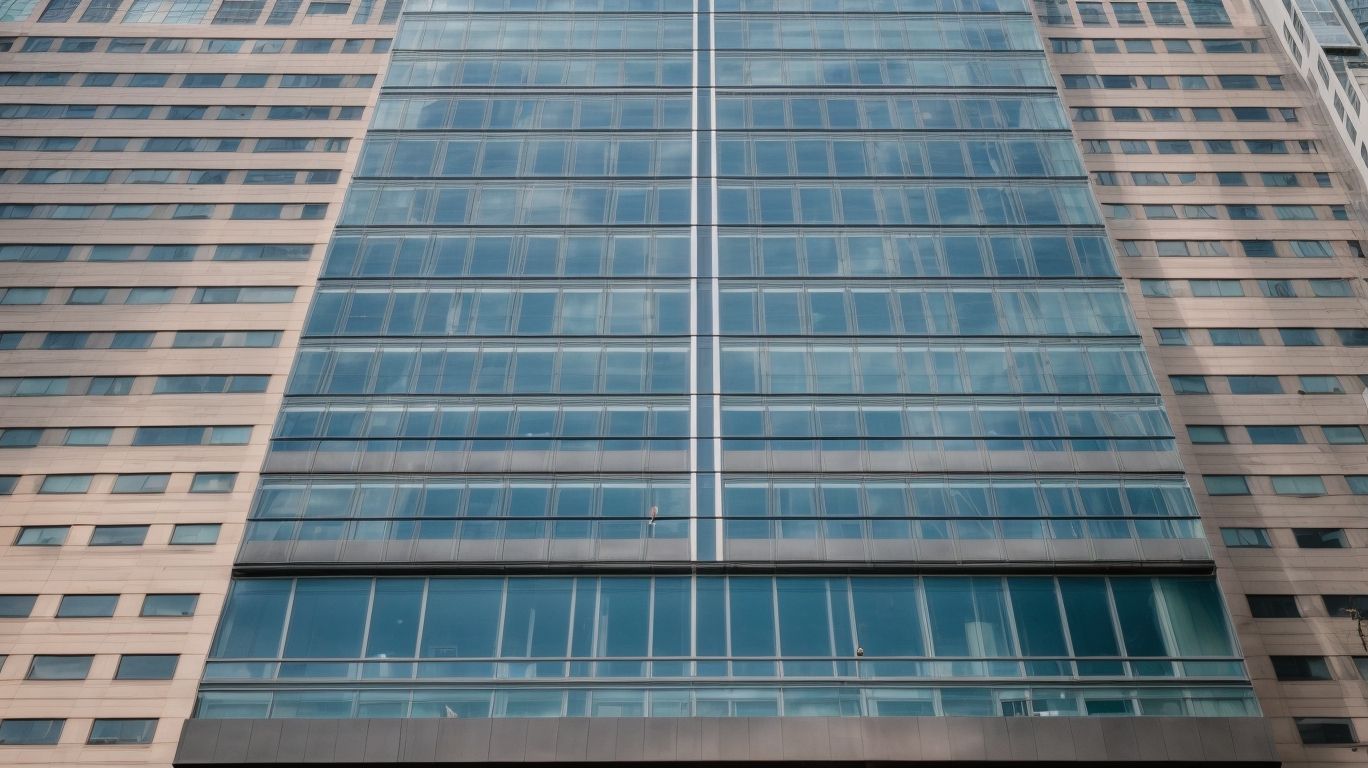
SF Bay Area Residential Structural Engineer: Building Safe and Durable Homes
Learn about SF Bay Area Residential Structural Engineering
- Definition, role, and importance of residential structural engineering in the SF Bay Area.
- Responsibilities, education requirements, and unique considerations for SF Bay Area residential structural engineers.
- Collaboration with architects and contractors, building codes and regulations, sustainable designs, and hiring considerations for SF Bay Area projects.
Are you interested in becoming an SF Bay Area residential structural engineer? In this article, we will explore the definition and significance of residential structural engineering in the SF Bay Area, understand the responsibilities of a residential structural engineer, and highlight the importance of their work in ensuring safe and durable homes.
Definition and importance of residential structural engineering in the SF Bay Area
Residential structural engineering involves the analysis, design, and construction of structural systems for residential buildings. In the SF Bay Area, where seismic activity is a potential risk, residential structural engineers play a vital role in ensuring the safety and stability of homes. Their expertise in designing structures that can withstand earthquakes is crucial for creating safe and durable homes in the region.
Overview of the role of an SF Bay Area residential structural engineer
A residential structural engineer in the SF Bay Area is responsible for designing and evaluating the structural integrity of residential buildings. They work closely with architects, contractors, and other professionals to ensure that the structures meet the required safety standards. From site investigations to the completion of construction, a residential structural engineer plays a crucial role in every phase of the project.

Importance of residential structural engineering in ensuring safe and durable homes in the SF Bay Area
In the SF Bay Area, the potential for seismic activity poses unique challenges for residential construction. A residential structural engineer is trained to design buildings that can withstand the forces generated by earthquakes. By analyzing site conditions, considering building codes and regulations, and implementing seismic-resistant structural systems, they contribute to the creation of safe and durable homes in the region.
Responsibilities of an SF Bay Area Residential Structural Engineer
A skilled SF Bay Area residential structural engineer has a wide range of responsibilities to ensure the safety and stability of residential structures. Let’s explore some of their key duties:
Analyzing and applying SF Bay Area building codes and regulations
SF Bay Area building codes and regulations are designed to ensure the safety and integrity of structures. A residential structural engineer must have a deep understanding of these codes and regulations and apply them appropriately in their designs. They must stay updated with any changes or additions to the codes to ensure compliance.
Conducting inspections and assessments specific to the SF Bay Area
Before and during the construction process, a residential structural engineer performs inspections and assessments of the site and existing structures. They evaluate soil conditions, assess the existing foundation, and identify potential risks or structural deficiencies. These assessments help them develop appropriate design solutions and make recommendations for necessary repairs or modifications.
Designing seismic-resistant structural systems for residential buildings in the SF Bay Area
Given the seismic activity in the SF Bay Area, a primary responsibility of a residential structural engineer is to design structures that can withstand earthquakes. They analyze the potential forces generated by seismic events and develop structural systems that can absorb and dissipate these forces. This involves designing reinforced foundations, incorporating steel or concrete elements, and implementing other seismic-resistant techniques.
Ensuring safety, stability, and durability of structures in the SF Bay Area
The safety, stability, and durability of residential structures are paramount. A residential structural engineer uses their expertise to ensure that the structures can withstand various loads, including gravity loads, wind loads, and seismic loads. They perform structural calculations and simulations to validate the integrity of the design and make necessary adjustments to optimize the safety and stability of the structure.
Collaboration with SF Bay Area architects and contractors
Effective collaboration with architects and contractors is essential for successful residential projects in the SF Bay Area. A residential structural engineer works closely with architects to integrate structural design with the architectural vision of the project. They also collaborate with contractors to ensure the proper execution of the structural plans on-site, addressing any construction challenges that may arise.
| Responsibility | Description |
|---|---|
| Analyzing and applying SF Bay Area building codes | Understanding and applying local building codes and regulations to ensure structural designs comply with safety standards. |
| Conducting inspections and assessments | Performing site inspections and assessments to evaluate soil conditions, existing structures, and potential risks for developing appropriate design solutions. |
| Designing seismic-resistant structural systems | Creating structural systems capable of withstanding seismic forces by incorporating seismic design principles and techniques. |
| Ensuring safety, stability, and durability | Validating the integrity of structural designs through calculations and simulations to optimize safety and stability under various loads. |
| Collaboration with architects and contractors | Working closely with architects and contractors to integrate structural design with the architectural vision and address construction challenges. |
Education and Professional Requirements for SF Bay Area Residential Structural Engineers
To become an SF Bay Area residential structural engineer, specific educational and professional requirements must be met. Let’s delve into these requirements:
Required degrees and educational background for SF Bay Area residential structural engineers
A minimum of a bachelor’s degree in civil engineering or a related field is typically required to become a residential structural engineer. The coursework covers various subjects such as structural analysis, design, mechanics, and materials. Additional specialization in structural engineering is highly recommended to gain in-depth knowledge and expertise in the field.
Certifications and licensing specific to the SF Bay Area
To practice as a residential structural engineer in the SF Bay Area, obtaining the necessary certifications and licenses is mandatory. These certifications ensure that the engineer has met the required standards and possesses the knowledge and skills to perform their duties competently. The specific certifications and licenses may vary depending on the jurisdiction and local regulations.
Continuing education and professional development opportunities for SF Bay Area residential structural engineers
Continuing education is vital for residential structural engineers to stay updated with the latest advancements, building codes, and engineering practices. Professional organizations and institutions offer seminars, workshops, and conferences where engineers can enhance their skills and expand their knowledge. Engaging in professional development opportunities ensures that residential structural engineers are equipped to handle the evolving challenges of the SF Bay Area construction industry.

Unique Considerations for SF Bay Area Residential Structural Engineers
Residential structural engineers in the SF Bay Area face unique considerations that differentiate their work from other regions. Let’s explore some of these considerations:
Seismic activity and earthquake-resistant designs in the SF Bay Area
The SF Bay Area is located in a seismically active zone, experiencing earthquakes of varying magnitudes. Residential structural engineers must have a thorough understanding of seismic design principles and techniques to create earthquake-resistant designs. They consider factors such as soil liquefaction, ground motion, and building response to earthquakes to ensure the safety and stability of residential structures.
Importance of familiarity with SF Bay Area building codes and regulations
Building codes and regulations specific to the SF Bay Area are designed to mitigate the risks associated with seismic activity. A residential structural engineer must be familiar with these codes to ensure compliance and design structures that meet the required standards. Staying updated with any revisions or additions to the codes is crucial to provide the highest level of safety and durability.
Strategies for mitigating the impact of earthquakes on structures in the SF Bay Area
Residential structural engineers employ various strategies to mitigate the impact of earthquakes on structures in the SF Bay Area. These strategies include the use of seismic isolation systems, dampers, and advanced structural analysis techniques. By implementing these measures, they enhance the resilience of residential buildings, ensuring their ability to withstand seismic events.
Collaboration with SF Bay Area Architects and Contractors
Collaboration between SF Bay Area residential structural engineers, architects, and contractors is essential for the successful completion of residential projects. Let’s explore the importance of communication and coordination in this collaborative process:
Importance of communication and coordination in the SF Bay Area
Effective communication and coordination between residential structural engineers, architects, and contractors are crucial for the smooth execution of a project. Regular meetings and discussions ensure that the design intent is properly understood and implemented. Timely communication also helps address any design conflicts or construction challenges, enabling the project to progress efficiently.
Integration of structural design with architectural vision in the SF Bay Area
Residential structures in the SF Bay Area require not only structural integrity but also aesthetic appeal. A residential structural engineer collaborates closely with architects to integrate the structural design with the architectural vision. By working together, they achieve a balance between aesthetics and structural performance, creating visually pleasing and structurally sound residential buildings.
Working together to achieve a cohesive and functional design in the SF Bay Area
The collaboration between residential structural engineers, architects, and contractors is crucial to achieve a cohesive and functional design. By considering each other’s expertise and input, they can optimize the structural design, address constructability concerns, and ensure that the final result meets the desired functional requirements.
SF Bay Area Structural Analysis and Design Process
The structural analysis and design process for SF Bay Area residential projects involves several important steps. Let’s explore each of these steps in detail:
Site investigations and assessments specific to the SF Bay Area
Before commencing any residential project in the SF Bay Area, a thorough site investigation is conducted by the residential structural engineer. This investigation helps identify any potential risks or challenges related to the site, such as soil conditions, slope stability, or proximity to fault lines. Assessing these factors allows the engineer to develop appropriate design solutions.
Load calculations and seismic analysis for the SF Bay Area
Load calculations play a crucial role in determining the structural requirements for residential buildings. Residential structural engineers perform calculations to determine the gravity loads, wind loads, and seismic loads that the structure will experience. Seismic analysis is particularly important in the SF Bay Area, considering the potential for earthquakes. It helps determine the appropriate seismic design parameters and requirements.
Material selection and considerations for SF Bay Area residential structures
The selection of appropriate building materials is essential to ensure the structural integrity and durability of residential buildings in the SF Bay Area. Residential structural engineers consider various factors such as strength, durability, and compatibility with seismic design requirements. They choose materials that can withstand the anticipated loads and environmental conditions while adhering to the local building codes and regulations.
Creation of detailed construction plans and drawings for SF Bay Area residential projects
Residential structural engineers create detailed construction plans and drawings that serve as a guide for the construction team. These plans include structural layouts, foundation designs, framing details, and connection specifications. The plans are precise and comprehensive, providing all the necessary information to ensure the accurate execution of the structural design.
Use of advanced software and technologies in SF Bay Area structural design
In the SF Bay Area, residential structural engineers utilize advanced software and technologies to assist in the analysis and design process. Computer-aided design (CAD) software allows for the creation of detailed 3D models and construction drawings. Structural analysis software helps simulate the behavior of the structure under various loads and assess its performance. These tools enhance the accuracy and efficiency of the design process.
Building Codes and Regulations in the SF Bay Area
Building codes and regulations play a crucial role in the SF Bay Area to ensure the safety and structural integrity of residential buildings. Let’s explore the importance of compliance and obtaining necessary permits:
Overview of SF Bay Area building codes and regulations
Building codes and regulations in the SF Bay Area are designed to address the unique challenges posed by seismic activity. These codes specify the minimum requirements for structural design, materials, construction methods, and fire safety. They are continuously updated to incorporate the latest scientific and engineering knowledge, ensuring the highest level of safety for residential structures.
Importance of compliance and obtaining necessary permits in the SF Bay Area
Compliance with building codes and obtaining the necessary permits are essential in the SF Bay Area. A residential structural engineer plays a crucial role in ensuring code compliance through their design and construction documentation. Obtaining permits from the local authorities is necessary to demonstrate adherence to the codes and regulations. Failure to comply can result in legal and safety risks, as well as project delays and additional expenses.
Role of a residential structural engineer in ensuring code compliance in the SF Bay Area
Residential structural engineers are responsible for ensuring that the structural design meets the requirements of the SF Bay Area building codes and regulations. They work closely with architects, contractors, and building officials to obtain the necessary approvals and permits. By applying their expertise and knowledge, they ensure that the structures are designed and constructed in compliance with the applicable codes, thereby ensuring the safety and stability of residential buildings.

Sustainable and Energy-Efficient Designs in SF Bay Area Residential Structural Engineering
Incorporating sustainable and energy-efficient design principles in SF Bay Area residential structural engineering is crucial for the region’s environmental and economic well-being. Let’s understand the importance of sustainability in residential structures and strategies for energy-efficient designs:
Importance of sustainability in SF Bay Area residential structures
Sustainability is a growing concern in the construction industry, and SF Bay Area residential structural engineering is no exception. By adopting sustainable practices, residential structures can minimize their impact on the environment and conserve natural resources. Sustainable design principles include the use of eco-friendly materials, energy-efficient systems, and strategies to reduce waste generation.
Integration of energy-efficient features in structural design in the SF Bay Area
Energy-efficient designs are essential to reduce energy consumption and minimize the carbon footprint of residential structures in the SF Bay Area. Residential structural engineers collaborate with architects and other professionals to integrate energy-efficient features into the design. This may include optimizing insulation, utilizing natural lighting and ventilation, and incorporating renewable energy systems such as solar panels.
Strategies for incorporating green building practices in the SF Bay Area
Green building practices focus on creating environmentally responsible and resource-efficient structures. Residential structural engineers can contribute to green building practices by promoting the use of sustainable building materials, designing efficient structural systems, and considering the life cycle analysis of the structures. By implementing these strategies, SF Bay Area residential structures can minimize their environmental impact and contribute to a sustainable future.
Case Studies and Examples of SF Bay Area Residential Structural Engineering
Real-life examples of SF Bay Area residential structural engineering projects can provide insights into the challenges faced by engineers and the innovative solutions implemented. Let’s explore some case studies and examples:
Real-Life Example of Residential Structural Engineering in the SF Bay Area
A Challenging Renovation Project in San Francisco
During a renovation project in the heart of San Francisco, structural engineer Sarah Reynolds faced the unique challenge of preserving the historic facade of a residential building while implementing modern seismic upgrades. The building, dating back to the early 1900s, required careful analysis and innovative solutions to ensure both structural integrity and architectural preservation.
Sarah collaborated closely with the project architect and construction team to develop a custom seismic-resistant structural system that seamlessly integrated with the building’s original design. Through meticulous planning and advanced software analysis, the team successfully reinforced the building against seismic activity without compromising its historical aesthetics.
The project not only showcased the technical expertise of Sarah as a residential structural engineer but also highlighted the importance of balancing safety requirements with the preservation of San Francisco’s architectural heritage. The successful completion of the renovation project stands as a testament to the vital role of residential structural engineering in maintaining the structural resilience of historic buildings in the SF Bay Area.
One notable example of residential structural engineering in the SF Bay Area is the design of high-rise residential buildings in San Francisco. These structures face unique challenges due to factors such as wind loads, seismic activity, and limited space for construction. Residential structural engineers employ innovative techniques, such as incorporating tuned mass dampers and advanced steel or concrete systems, to ensure the safety and stability of these high-rise residential buildings.
By understanding the role, responsibilities, and considerations of an SF Bay Area residential structural engineer, you can appreciate the importance of their work in building safe and durable homes in the region. Whether it’s designing earthquake-resistant structures or ensuring code compliance, these professionals play a crucial role in creating homes that can withstand the unique challenges of the SF Bay Area.




No Comments